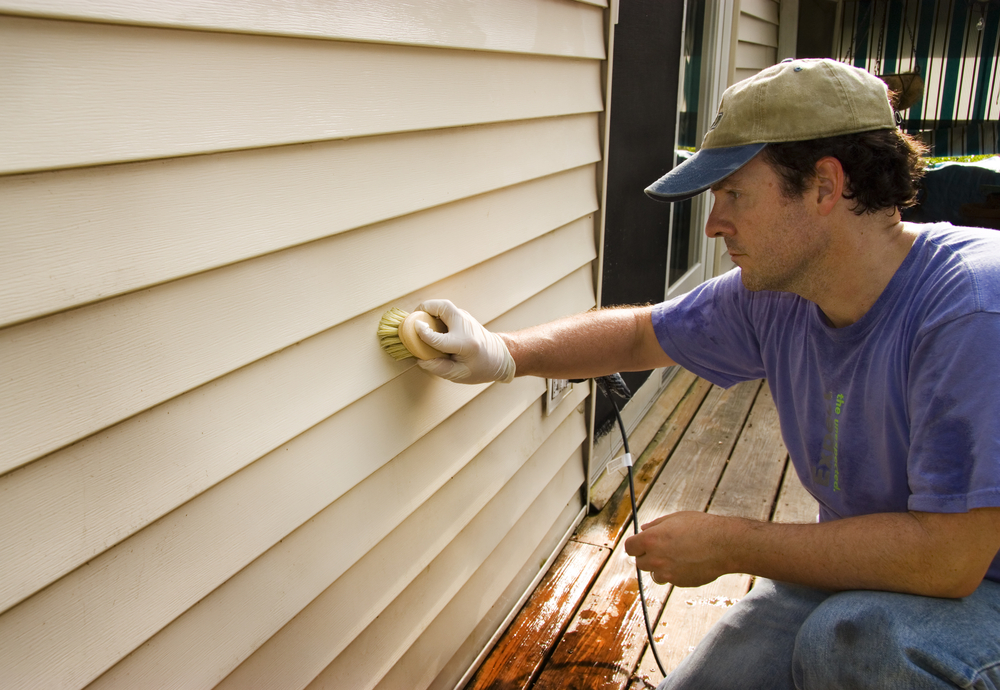James Hardie’s line of Fiber Cement Siding is the perfect material for protecting your home’s exterior from the harsh New England climate. It combines the beauty of natural materials like wood or stone with the versatility of modern vinyl siding. It’s heavier and more durable than vinyl and specially designed to resist harsh elements like heat and moisture.
Whether you’re right next to the ocean or high up in the snowy mountains—fiber cement siding is a smart choice for anyone looking for reliability and value anywhere in New England.
Its constant exposure to the extremes of New England’s weather means fiber cement siding will get dirty—there’s just no avoiding it. Despite its outstanding resilience, there are still some precautions to follow when preparing to clean it. Abrasive chemicals and tools have the potential to damage the finish of the siding, greatly reducing its effectiveness.
This article will explore the best practices for cleaning fiber cement siding, based on James Hardie’s guidelines and suggestions from other professional contractors.
Planning and Preparing to Clean Fiber Cement Siding
Before starting the cleaning process, it’s best to walk around your home to inspect the siding first. You should look out for general dirt and grime such as debris or bird droppings, but also keep an eye out for oil, grease, mold or mildew—these will require special care.
Also, be aware of any plants or shrubs below the areas you’ll be working. If you end up using cleaners or chemicals, you’ll want to drape a tarp over them to prevent any damages. Additionally, ensure all doors and windows are closed to prevent anything from wafting inside your house.
Cleaning your siding is best done on an overcast day. If direct sunlight hits any soapy areas, it will dry too quickly and create even more damage. If it is a sunny day, be sure to work quickly and in small sections to prevent this.
Finally, before beginning the project, make sure you’re wearing appropriate protective attire to prevent contact with or inhalation of chemicals, odors, or mold.
Best Practices for Cleaning Fiber Cement Siding
You should consider cleaning your siding once or twice a year, depending on how dirty it gets. Fiber cement siding’s sensitivity to abrasive chemicals means some care must be taken when cleaning, but it also makes it a fairly simple and straightforward process.
James Hardie strongly recommends against using a high-power pressure washer. Instead, he suggests a normal garden hose and soft, non-abrasive tools like sponges, cloths, or nonmetal brushes.
Dirt and Grime
For general dirt and grime, use your brush or a wet cloth to wipe away the excess, then rinse the area with water. Repeat this process if necessary. The potential for the water to run downwards exists, so it’s best to start at the top of your house and work your way down to clean anything that drips down as you’re working.
Organic Contaminants
To clean stronger stains from organic contaminants such as oil or grease, you’ll want to add a light dish soap to the water. James Hardie suggests these brands:
- Dawn
- Ivory
- Joy
Apply the soap to a cloth and wipe down the problem area, going in the direction of the grain. To ensure that the soap doesn’t dry and leave more residue, rinse the area immediately.
Mold and Mildew
While fiber cement siding is designed to be resistant to mold and mildew, growth does occasionally occur in particularly hot and humid climates. For these, you’ll want something a bit stronger than dish soap, but gentle enough that it doesn’t damage the integrity of the material.
James Hardie recommends using light mold and mildew cleaners such as:
- Jomax
- Mildew Check
- Mold Armor
Regardless of what you use, be sure to read and follow the instructions on the product to prevent misuse and damage.
You can prevent the further growth of mildew or mold by adjusting the pH (acidity) of the surface with common household items like salt, baking soda, bleach, or ammonia. Use only one and dilute it with water, then apply it to the area before rinsing with water.
Capital Construction is New England’s James Hardie Expert
You spent a lot of time and money on your beautiful new fiber cement siding. The thought of cleaning and potentially damaging it is nerve-wracking! Capital Construction is a certified James Hardie Elite Preferred contractor, which means you can trust us to help you with installing and maintaining your James Hardie siding.
Have any questions or concerns about your siding? Don’t hesitate to call Capital Construction! To get started, click here to contact us directly.














